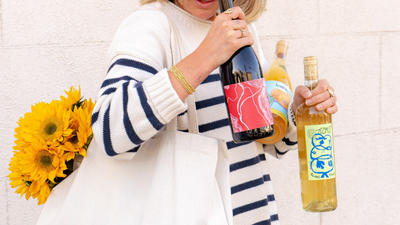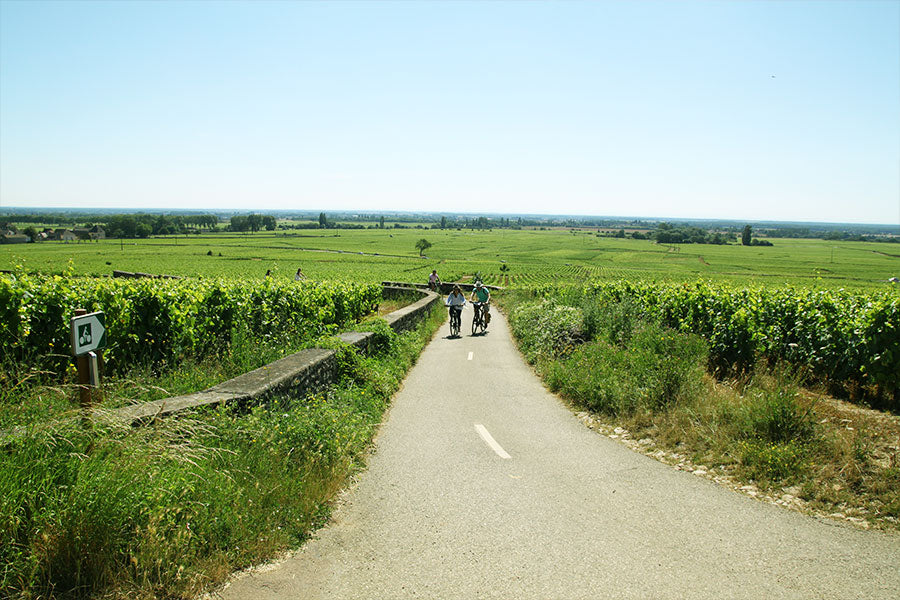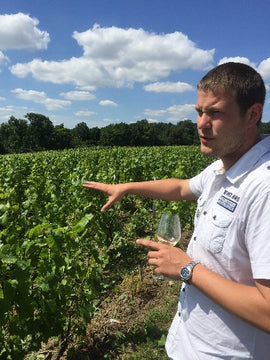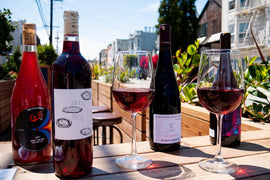-
Burgundy: A little bit of history
Wine has shaped the region for over 2000 years, and in the heart of Burgundy, in every town and village, wine is at the center of everything. From as early as the third century B.C. Roman winemakers were at work in Burgundy. The people of Augustodunum travelled many miles to plant vines along the south-facing slopes of the Saône River Valley. They produced a highly concentrated beverage seasoned with herbs and sweetened by the addition of honey which could only be drunk if diluted with water. Fortunately for Burgundy, the church took up where the Romans left off. On the fall of the Roman empire the vines passed into the hands of the abbeys and monasteries established in the region. The monks upheld the vital traditions established by their Roman predecessors. Much wine-making progress was made in the era dominated by the religious brethren. The monks developed and documented essential wine making techniques — care of the vines, skilled pruning, hygiene, adequate alcohol levels — to prevent the wine turning to vinegar en route to the various parts of the order’s wide network of abbeys throughout Europe.
-
What are the growing regions in Burgundy?
Located in the east-central part of France, Burgundy has five primary wine growing areas: Chablis, Côte de Nuits, Côte de Beaune, Côte Chalonnaise, and Mâconnais. The region of Burgundy may be small in size, but its influence is huge in the world of wine.
-
What makes the wine of Burgundy so distinctive and sought-after?
The Cistercians built vinification cellars in the villages alongside the vineyards to avoid transporting men and materials over vast distances in Burgundy, and to ensure conservation of the wine. Associating the winemaking cellars with the land led people to recognize the distinctive characteristics of the wines from different parcels and how they tasted differently. There is no guessing game when it comes to knowing what grape variety you're getting in Burgundy, because more than 99% of the time, Pinot Noir and Chardonnay are the only grapes used. However, the unique terroir in each region influences the flavors of those grapes, so it's important to research the characteristics of each region and find the profile that best suits your palate. Regarding the appellations, there is a total of 100 appellations (PDO, protected designation of origin). The appellation system is based on a 4-tier hierarchical ranking (from top to bottom):
Level 1: Grands Crus: 33 accounting for 1.4% of the production.
Level 2: Premiers crus (first growth), accounting for 10% of the total production
Level 3: Village (communal) appellations, accounting for 36.6% of the total production
Level 4: Regional appellations, accounting for 52% of the production
In terms of appellations, there are 33 Grands Crus PDO, 44 village and premier cru (first growth) PDO and finally, 23 regional PDOs.
-
When considering which Burgundy to drink, choosing the producer is of equal, or maybe of more importance than vintage. Below are what we think are some of the best producers in the Côte d'Or.
-
Domaine de l'Arlot: Situated in the heart of Côte de Nuits, Domaine de l'Arlot is the guardian of exceptional viticultural heritage and is one of the seminal properties in the area. Their philosophy is to cultivate vines and make wines that express the terroir they come from. In 2015 the very talented Geraldine Godot took over the domaine. While retaining the core values of l’Arlot, including biodynamic farming, Geraldine has brought her own style to this historic estate, with extraction kept to a minimum, and the wines seeing less new oak than in the past. All of this is done to preserve the gorgeous fruit from their cherished vineyards.
-
Xavier Monnot: Xavier Monnot is a leading producer in Meursault whose winemaking style emphasizes purity of fruit, elegance and complexity. Monnot has vineyards stretching from Beaune to Maranges in Burgundy's Côte de Beaune, and the family's ancestors have lived in the region since 1723. Xavier Monnot sees each of his vineyards as unique, with their specific mix of soil types, mesoclimate, and orientation. He therefore treats each plot with meticulous, individual care. Careful thought goes into the matching of each rootstock and clone, with the destined vineyard. Yields are kept low and certified sustainable practices are employed.
- Domaine Michel Gros: Michel Gros is also a 6th generation winemaker. He started to work with his father, Jean, on the family estate - Domaine Jean Gros. By 1978, while continuing to collaborate with his father, he set the first stone of his own domain by owning 2 hectares in the Hautes-Côtes de Nuit appellation, which he inherited. In 1979, his first vintage was produced.]Michel added other parcels to his name that had been mostly abandoned since the phylloxera crisis, including 'Aux Réas' (Vosne Romanée) in 1990, several plots in Chambolle Musigny in 1993 and 'En La Rue de Vergy' (Morey-SaintDenis) in 1995. Jean Gros retired in 1995 and decided to divide his estate between his children. Michel, who had run his father's estate along with his own, received in his share 'Clos de Vougeot', a Grand Cru; 'Clos de Réas', a 1er Cru monopole in Vosne Romanée; one parcel in Vosne Romanée; two parcels in Nuits Saint-Georges and one parcel in Bourgogne Villages. He uses cover crop between the rows along with other sustainable farming practices in order to keep vineyard intervention to a minimum. Passionate but also very rigorous, Michel Gros brings constant care to the development of his wines, by mastering all the stages of production, from vine to bottling. Modest and unassuming, he expresses himself through his wines: generous, fine, elegant, of reliable and consistent quality.
-
Domaine de l'Arlot: Situated in the heart of Côte de Nuits, Domaine de l'Arlot is the guardian of exceptional viticultural heritage and is one of the seminal properties in the area. Their philosophy is to cultivate vines and make wines that express the terroir they come from. In 2015 the very talented Geraldine Godot took over the domaine. While retaining the core values of l’Arlot, including biodynamic farming, Geraldine has brought her own style to this historic estate, with extraction kept to a minimum, and the wines seeing less new oak than in the past. All of this is done to preserve the gorgeous fruit from their cherished vineyards.





